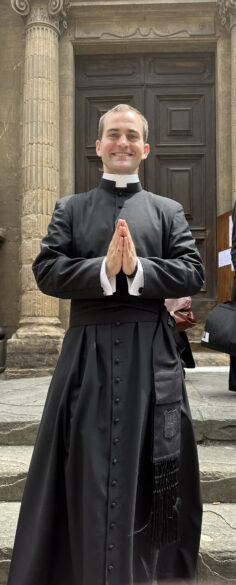
Feature photo…Vocation…


SPIRITUAL ENRICHMENT
MADISON St. Francis, Diocesan Fall Faith Formation Day, Saturday, Aug. 19. Theme is “Renewing the church with families of faith.” Registration begins at 9 a.m. with first session beginning at 10 a.m. Event will conclude at 3 p.m. The featured speaker is Dr. Tim Hogan, co-author of “The Gift of Spiritual Hurricanes: Tools to Rebuild Authentic Spirituality.” Details: register at https://bit.ly/FFFDay2023 or questions to (601) 960-8473.
SPRINGFIELD, Ill. “Come and See” weekends at Dominican Sisters of Springfield for single Catholic women ages 21-45. Eleven events scheduled in 2023-2024, first is Sept. 15-17. Events are in person or “Zoom and See” (virtual) and provide a brief immersion in the day-to-day lives of the sisters. Event is free, but responsible for your own transportation expenses. Housing and meals provided. Space is limited. Register at https://springfieldop.org/come-see-registration/. Details: call Sister Denise Glazik at (217) 652-5881 or visit https://springfieldop.org/come-see-dominican-sisters-vocation-event-schedule-for-2023-2024/ for more information.
WASHINGTON D.C. Dominican Rosary Pilgrimage, Sept. 30 at the Basilica of the National Shrine of the Immaculate Conception. Join with Catholics from around the country to seek the intercession of Our Lady. Hear life-changing talks; celebrate Mass and pray the rosary. Details: for more information visit rosarypilgrimage.org.
PARISH, FAMILY & SCHOOL EVENTS
BATESVILLE St. Mary, Rummage Sale, Aug. 4-5 at the parish center. You are welcome to start bringing your gently used items to the center. Details: parish office (662) 563-2273.
GLUCKSTADT St. Joseph, German Fest, Save the date: Sunday, Sept. 24.
GREENWOOD MARC (Mississippi Association for Returning Citizens), Lunch and Learn, Saturday, July 29 from 11 a.m. to 1:30 p.m. at Locus Benedictus (1407 Levee Road #2134). Sign up and help build a brighter future for those affected by the criminal justice system. Details: visit marcreentry.org or email dorothy@marcreentry.org.
NATCHEZ St. Mary Basilica, Thursday Night at the Movies, July 27 “The Scarlet and the Black” at 6:30 p.m. Suitable for adults and older teens. Soft drinks, snacks and popcorn available for small donation. No admission fee, donations to Miss-Lou Pregnancy Center accepted. Details: church office (601) 445-5616.
St. Mary Basilica, Blood Drive, Tuesday, Aug. 15 from 12:30-6 p.m. at the Family Life Center. Details: contact church office if you would like to reserve an appointment time now – (601) 445-5616.
Assumption BVM, Assumption Feast Day Celebration, Saturday, Aug. 19 at 6 p.m. in Tuite Hall. Menu by Mascagni brothers – spaghetti and meatballs, tortollini, chicken salad, meat tray, desserts and more. No cost, donations welcome. Details: call (601) 445-5616.
OLIVE BRANCH Queen of Peace, Back Pack Blessing at Mass, Sunday, July 30.
SENATOBIA St. Gregory, Back Pack Blessing at Mass, Sunday, July 30.
TUPELO St. James, Knights of Columbus Charity Gala Concert, Saturday, Aug. 12 at 6 p.m. in Shelton hall. Tickets are $25 per person and includes heavy hor d’oeuvres. Details: David at (662) 213-3742.
REMINDERS/NOTICES/OTHER EVENTS
JOB OPENINGS Catholic schools across the diocese have a variety of positions open. Please visit https://jacksondiocese.org/employment for an opportunity near you.
BIRMINGHAM, Ala. EWTN Free Family Celebration, Saturday, Aug. 26 at the Birmingham Jefferson Convention Complex. Enjoy talks by EWTN TV and radio hosts. Shop religious items, attend Holy Mass and be part of a televised show. Details: ewtn.com/familycelebration.
INDIANAPOLIS Eucharistic Congress, July 17-21, 2024. Registration is now open. See what Our Lord has in store for this next chapter for the Catholic Church in United States. Purchase tickets at https://bit.ly/3ydav9Q. Details: EucharisticCongress.org.
JACKSON Catholic Charities Journey of Hope Luncheon, Friday, Aug. 11 at the Hilton Jackson at 12 p.m. Featured speaker is actress Robin Givens, sharing her experience of abuse and urging all to educated themselves on domestic violence. To order tickets for the Journey of Hope luncheon, the “Meet and Greet” reception, or to inquire about sponsoring tables, call (601) 326-3714 or visit https://bit.ly/CCJOH2023 to register for the luncheon.
NASHVILLE Billings Ovulation Method Teacher Training, Oct. 19-21. Learn the science of fertility in order to monitor reproductive health and wellness. Cost: $750. Details: events.boma-usa.org.
INDIANAPOLIS National Catholic Youth Conference (NCYC), Nov. 16-18, 2023 at the Indiana Convention Center. This distinctly Catholic three-day conference will include opportunities for spiritual growth, prayer, learning and service. For more information, visit ncyc.us.
Nota del editor: A continuación se encuentra la homilía que el obispo Joseph Kopacz pronunció con motivo del centenario del Seminario de San Agustín el sábado 24 de junio en la parroquia del Sagrado Corazón en Greenville.
Para no perderse la columna del obispo Kopacz y otras noticias católicas importantes, únase a nuestra lista de correo electrónico en Flocknote. ¡Envíe un mensaje de texto con MSCATHOLIC al 84576 o regístrese en jacksondiocese.flocknote.com!
Por Obispo Joseph R. Kopacz, D.D.
La Gran Comisión del Señor Jesús de hacer discípulos a todas las naciones, a través de la enseñanza y el bautismo, fue adoptada por el Santo Padre Arnoldo Jansen, fundador de la Sociedad del Verbo Divino (SVD) establecida el 8 de septiembre de 1875.
Nosotros proclamamos la Gran Comisión en el Evangelio esta mañana y durante los últimos casi 148 años, la Sociedad del Verbo Divino ha levantado su tienda en aproximadamente 70 países, para aplicar la frase del Prólogo del Evangelio de San Juan sobre el Hijo de Dios, y ahora con un número de 6.000 sacerdotes y hermanos, es la orden religiosa más grande de la Iglesia Católica.
La Gran Comisión del Señor Jesús es la culminación de los cuatro Evangelios antes de ascender al cielo. Hoy la escuchamos de Mateo. Fácilmente podríamos haberla escuchado de Marcos, Lucas y Juan. “Id por todo el mundo y predicad el evangelio a toda criaturas.” (Marcos 16:15) “Y he aquí, yo enviaré sobre vosotros la promesa de mi Padre…” (Lucas 24:49) “…como el Padre me ha enviado, así también yo os envío. Después de decir esto, sopló sobre ellos y les dijo*: Recibid el Espíritu Santo. A quienes perdonéis los pecados, estos les son[f] perdonados; a quienes retengáis los pecados, estos les son[g] retenidos.” (Juan 20:23)
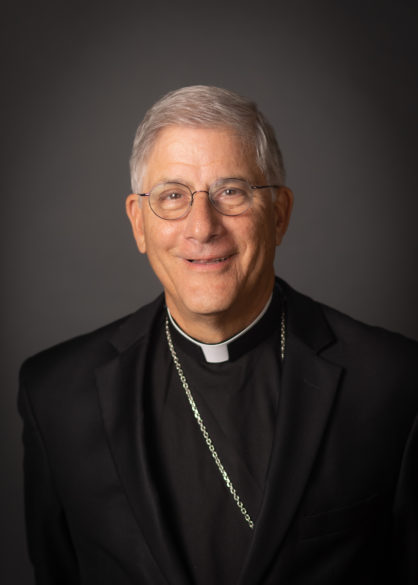
San Padre Jansen vivió proféticamente bajo el lema de que “anunciar el Evangelio es el primer y más grande acto de caridad”. Proporcionó esta visión para la Sociedad del Verbo Divino en los siguientes extractos de sus escritos.
“El fin último de nuestra misión hoy es el mismo que ha sido desde los tiempos de nuestro fundador, ‘anunciar el Reino del amor de Dios’ como destino común de toda la humanidad y horizonte hacia el cual caminamos”.
“Es del diálogo interior amoroso del Dios uno y trino que surge esta misión, diálogo de amor y de perdón con toda la humanidad. No inventamos nuestra propia misión, es Missio Dei, somos llamados por el Padre, enviados por la Palabra y guiados por el Espíritu”.
Sería negligente pasar por alto el impacto de la vida familiar del Padre Janssen en su formación en la fe, vocación y visión final para la Sociedad del Verbo Divino. Gerhard y Anna Katharina Janssen, sus padres eran personas de gran fe y vivían la iglesia doméstica al más alto nivel.
El padre del Padre Arnold Janssen fue bendecido con ojos que veían y oídos que escuchaban la Palabra de Dios mientras la ponían en práctica. Tenía un gran amor por la Trinidad y por las Sagradas Escrituras, y con firmeza construyó una casa sobre roca para su hijo Arnold, el segundo de 10 hijos.
De los escritos de los miembros de la Sociedad del Verbo Divino, se nos dan cuatro carismas o características para su comunidad religiosa mundial. “Muchas órdenes y congregaciones religiosas tienen ciertas características o rasgos que las hacen conocidas. Somos reconocidos por las cuatro dimensiones características: la Biblia; Animación Misionera; Justicia y Paz; e integridad de la creación”.
En parte, el compromiso con la justicia y la paz llevó a la Sociedad del Verbo Divino al Sur Profundo y a Mississippi a principios del siglo XX. Uno de sus logros singulares fue lanzar el seminario Sacred Heart en 1920, la primera escuela para candidatos afroamericanos al sacerdocio en los Estados Unidos.
Este fue un logro intrépido en el Delta de Mississippi en los alrededores de Jim Crow. De hecho, después de unos años se hizo evidente que el seminario tendría más posibilidades de sobrevivir y prosperar si los SVD lo trasladaban a Bay Saint Louis, donde había muchos más católicos y recursos. Comprenda que en ese momento la Diócesis de Jackson abarcaba todo Mississippi. En 1923 se produjo el cambio y el seminario pasó a llamarse San Agustín.
Estamos aquí hoy para reconocer que, aunque la celebración del 100 aniversario del seminario se celebrará a finales de este año, sus comienzos fueron en el Sagrado Corazón en estos terrenos. En ese momento, la Sociedad del Verbo Divino aún no había alcanzado la marca de medio siglo desde su fundación, lo que solo se suma a este notable esfuerzo por ir a todas las naciones.
Bendiciones a todos los que son parte de la Sociedad del Verbo Divino, y mucha gratitud por su continua presencia en la Diócesis de Jackson, ahora por más de 100 años. Concluyo con un sentido anhelo y una oración personal desde la espiritualidad personal de San Padre Arnoldo Janssens.
“Que las tinieblas del pecado y la noche de la incredulidad se desvanezcan ante la Luz de la Palabra y el Espíritu de la Gracia, y que el corazón de Jesús viva en el corazón de todos”.
Oh Dios, verdad eterna, creo en ti.
Oh Dios, fortaleza y salvación nuestra, en ti confío.
Oh Dios, bondad infinita, te amo con todo mi corazón.
Por Danna Johnson, LEM
HOUSTON – La señora Maria Tackett recibió el Premio Chance al Servicio, en Misa especial y ceremonia efectuada en la Catedral de San Pedro, el pasado 4 de marzo.
La señora María es una defensora de todas las personas necesitadas, especialmente los Hispanos, conectándolos con diferentes recursos.
La nominación al Premio Chanche fue un homenaje y reconocimiento que toda la comunidad católica de Houston le debía a la dedicación diaria de ella.
Fue una alegría muy grande para la señora María recibir el Premio Chanche y guarda con mucho cariño y modesto orgullo el certificado, medalla y las fotos de ese día.
La señora María es la primera persona Hispana que llegó a la iglesia del Inmaculado Corazón de María en Houston, en 1976.

JACKSON – En Misa especial, este año, el sábado 4 de marzo, el obispo Joseph Kopacz entregó el Premio Chanche al Servicio a 40 adultos en la Catedral de San Pedro Apóstol. Uno de los adultos premiados fue la señora Maria Tackett, primera Hispana en la comunidad de Houston, desde 1976, y donde inició las Misas en español y hoy es tambien Ministra Extraordinaria de Eucaristía y voluntaria de caridades católicas en Vardaman. (Foto de Tereza Ma)
Desde entonces, ha sido un miembro activo de la comunidad parroquial. Ella ayudó al Padre Gerald Peterson, Sacerdote de Glenmary, para celebrar la Primera Misa en español en esta área.
La señora María nunca espera nada a cambio. Desde hace 25 años se dedica a mantener limpios y planchados los purificadores, corporales y toallas de mano.
Ella es miembro del actual Consejo Parroquial de la Iglesia, es Ministra Extraordinaria de Eucaristía y voluntaria en la oficina de Caridades Católicas en Vardaman.
Su participación se destaca de otros feligreses por su constancia en el servicio a la parroquia y la comunidad desde 1976.
Muchas familias, especialmente las recién llegadas a nuestra comunidad, se han beneficiado de su cuidado. Su espíritu acogedor inspira a otros a seguir su ejemplo.
Ella vive una de las famosas citas de San Francisco de Asís: “En todo tiempo, predica el Evangelio y si es necesario, usa palabras.”

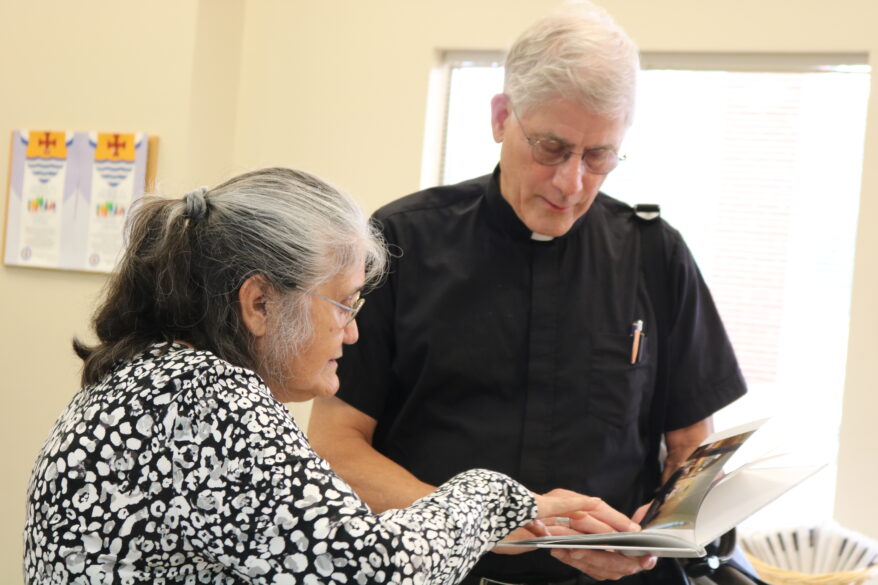
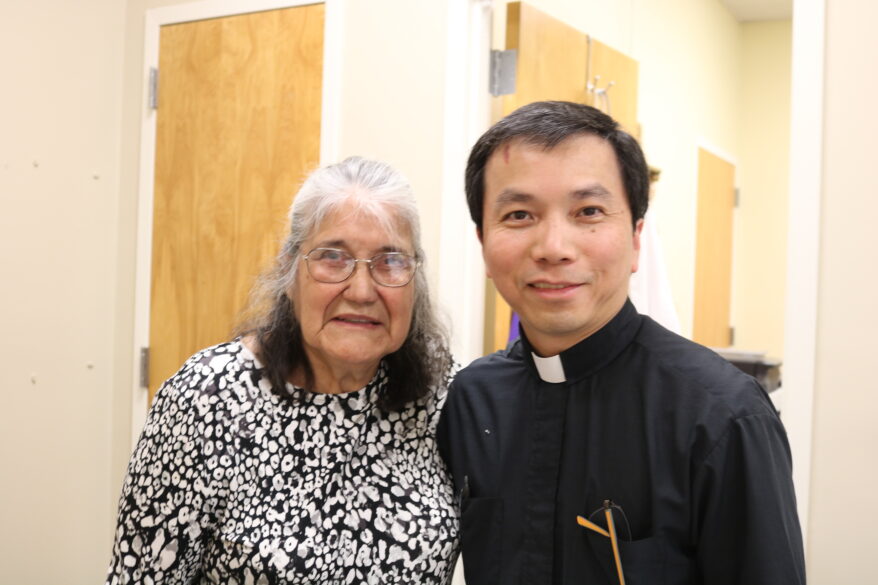
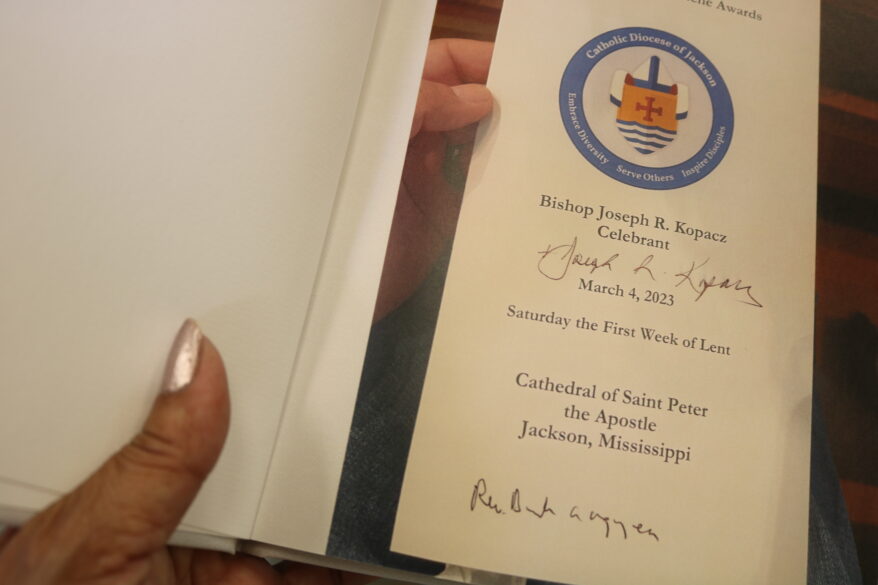
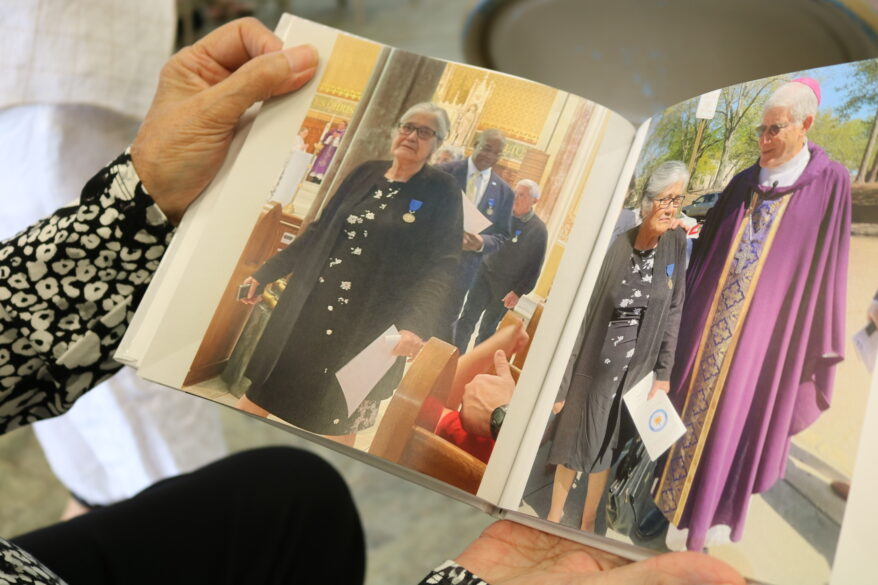
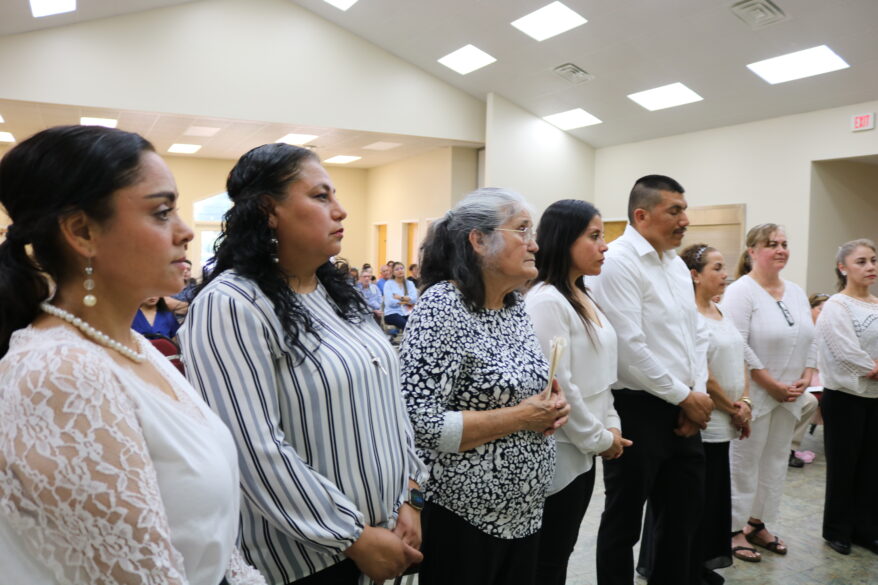
LLamados por su nombre
Por Padre Nick Adam
CUERNAVACA, México – Llevamos varias semanas de nuestra excursión a México mientras tres de nuestros seminaristas y yo aprendemos español y nos encontramos con las culturas de la parte central del país.
Nuestro día típico durante la semana laboral consiste en cuatro horas de clases que cubren gramática, conversación, cultura e historia. Cada día, dos horas son individuales con un maestro, mientras que las otras dos incluyen conferencias con un grupo y más conversación.
Nos hospedamos en una abadía benedictina llamada Nuestra Señora de los Ángeles en un pequeño pueblo dentro de los límites de la ciudad de Cuernavaca. Asistimos a Misa todos los días en el monasterio y nos unimos en oración con los monjes para la Liturgia de las Horas.
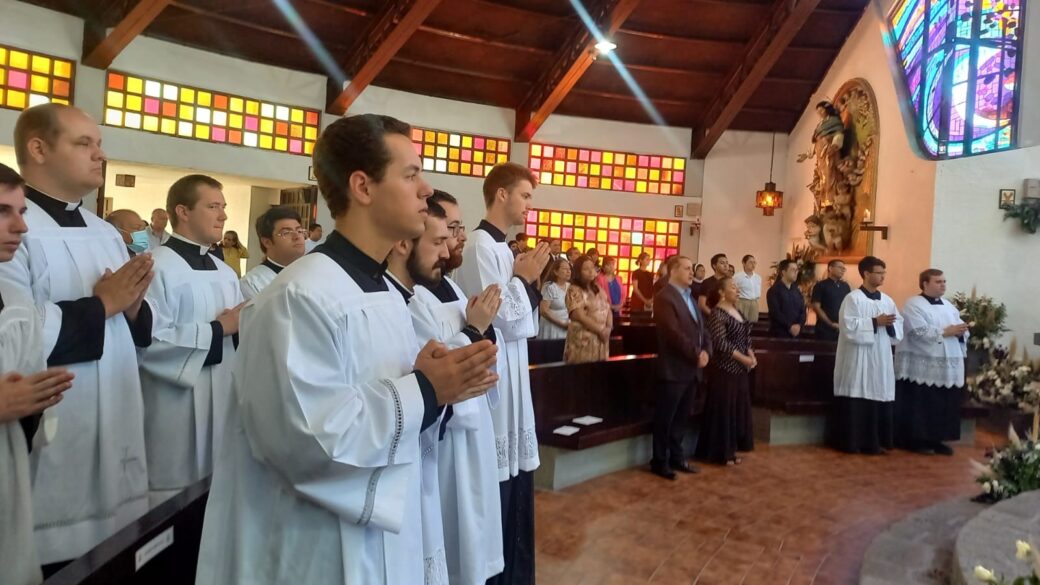
CUERNAVACA, México – Los seminaristas Will Foggo y Grayson Foley se pueden ver en el coro, de la abadía benedictina Nuestra Señora de los Ángeles, durante la Misa en el Día de la Fiesta de San Benito. (Fotos cortesía del Padre Nick Adam)
Nuestros maestros también viven en los terrenos, por lo que interactuamos con ellos a lo largo del día y los conocemos y aprendemos sobre sus familias y sus experiencias a un nivel más personal.
Los fines de semana hemos ido de excursión para conocer las culturas de la región. Nuestro primer fin de semana fue un amplio recorrido por el área metropolitana de la Ciudad de México. El segundo lo pasamos en una pequeña comunidad indígena llamada Cuautla donde trabajamos en una parroquia y visitamos varias de sus 24 capillas misioneras.
Como sacerdote con una gran comunidad hispana en su parroquia, ya he visto muchos frutos de este viaje. Debido a que estamos en México, entiendo mucho más acerca de las personas a las que sirvo en casa. Ha sido divertido experimentar cosas aquí que ya experimenté en Mississippi. La comida, las celebraciones y las costumbres aquí me recuerdan a menudo cosas que nuestra comunidad hispana ya hace en la Catedral de San Pedro.
También es algo ‘incómodo’ para todos nosotros. Tenemos el desafío de buscar pacientemente las diferencias en la cultura, la comida y otras prácticas , por ejemplo, ¡todavía tengo que encontrar el uso del aire acondicionado! Sin embargo, cada vez que se presenta un desafío, el Señor nos está ayudando a crecer en el amor y perseverar.
Estos desafíos fortalecen nuestra determinación de compartir el Evangelio y nos ayudan a comprender más sobre nosotros mismos y sobre el mundo en el que vivimos, y el mundo del que provienen y aprecian nuestros propios feligreses.
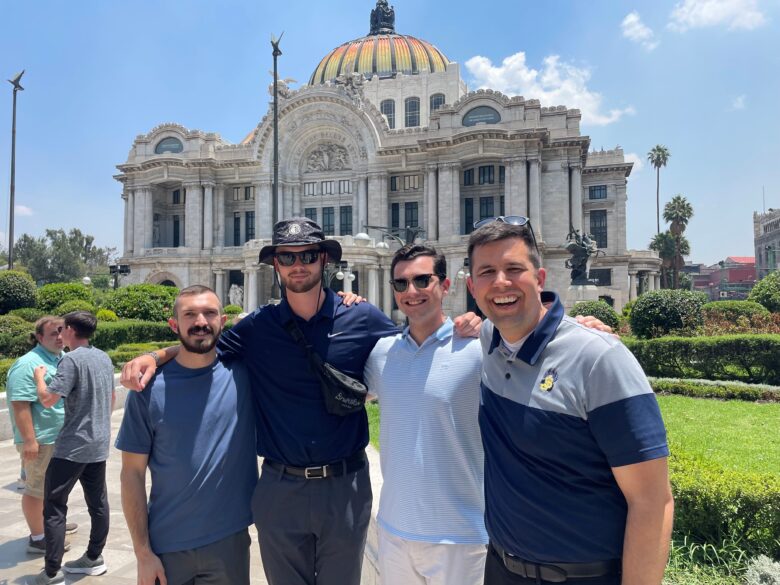
CIUDAD DE MÉXICO – (i-d) Will Foggo, Grayson Foley, el diácono Tristan Stovall y el padre Nick Adam, director de vocaciones de la diócesis, en el exterior del Museo de Arte de la Ciudad de México a principios de junio.
Estoy agradecido por aquellos que nos están ayudando a sentirnos como en casa en México. Muy especialmente estoy agradecido por el hermano Francisco, quien es el líder de nuestro grupo y un monje en el monasterio. Es originalmente de España, pero se mudó a la Ciudad de México para trabajar en el centro de la ciudad.
Había sido ateo pero su tiempo con los pobres convirtió su corazón. Es una fuente constante de energía y alegría.
También estoy muy agradecido con nuestra maestra principal, Bibiana Arroyo. Ella y su equipo están muy dedicados a asegurarse de que nuestra educación sea lo mejor posible y hace un trabajo fabuloso e interactúa con todos los estudiantes y se asegura de que nos sintamos como en casa. He llegado a ser amigo de su marido Jesús, a los dos nos encanta el baloncesto.
Nuestro viaje de inmersión de verano está llegando a su fin y todos estamos trabajando para seguir progresando en nuestra capacidad para hablar español. Las experiencias aquí continúan siendo únicas y ricas.
Para el 4 de julio, nos invitaron a cocinar comida estadounidense tradicional y todos aportamos para comprar fuegos artificiales y disfrutar de un gran espectáculo por la noche. El diácono Tristan preparó el mejor gumbo que he probado, tal vez sea porque no he estado en mi país de origen durante seis semanas, pero de todos modos fue increíble y tuvimos una gran velada.
Uno de los mejores aspectos de este programa es que nuestros maestros se quedan en el monasterio con nosotros. Comen con nosotros y llegamos a conocerlos a ellos y a sus familias. A la fiesta del 4 de julio se invitó a las familias de todos los maestros. Fue una gran velada y un gran testimonio para los docentes y sus familias de la alegría del sacerdocio y la alegría de nuestros seminaristas. Pude dar una lección detallada sobre cómo jugar cornhole, ¡nunca supe cuántas reglas había en ese juego hasta que tuve que describirlas todas en español!
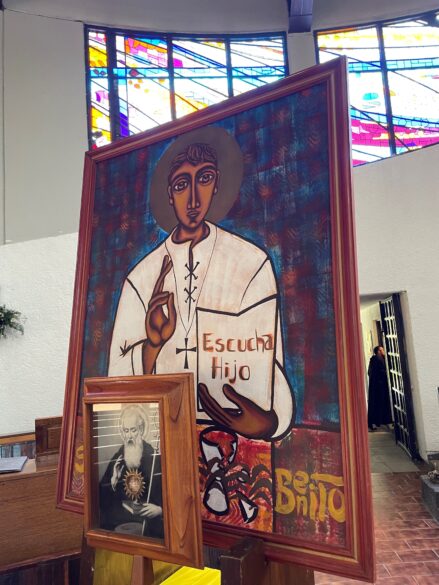
A medida que el programa se acerca a su fin, estoy muy emocionado de llegar a casa. Ha sido mucho trabajo y hay muchos desafíos que conlleva vivir en un país diferente durante un largo período de tiempo. El mensaje que me sigue llegando en oración es que necesito abrazar lo incómodo. Es bueno, a veces, sentirse incómodo porque nos ayuda a estirarnos y convertirnos en lo que Dios quiere que seamos, no solo en lo que nos sentimos cómodos siendo. Creo que esta experiencia me ha ayudado a mí ya nuestros seminaristas a aprender esa lección, y este será un gran regalo para el resto de nuestras vidas.
Muchas veces este verano nos hemos enfrentado a una elección: podemos regresar a un lugar cómodo o seguir adelante. Esto sucedió en el salón de clases, durante las conversaciones a la hora de comer y en las excursiones. Hicimos una larga caminata hace un tiempo que no esperábamos que fuera demasiado ardua, pero una hora después nos dimos cuenta de que el terreno iba a ser muy difícil. Pero seguimos adelante, y el hermoso paisaje hizo que todo valiera la pena.
Cada vez que seguimos hablando español en lugar de volver al inglés fue un momento de gracia. Cada vez que intentábamos escuchar la homilía, incluso cuando no pensábamos que entenderíamos nada, era un momento de crecimiento. Cada vez que seguíamos caminando, porque eso es lo que el Señor quería que hiciéramos, era un momento para acercarnos a él y crecer en humildad y confianza. Aprendí mucho español este verano, pero creo que mi dependencia y confianza en Jesucristo fue lo que más creció.
Todavía queda mucho trabajo por hacer y más desafíos por cumplir. Por favor, manténganme a mí y a nuestros otros tres peregrinos de Jackson en sus oraciones.
By Rhina Guidos
(OSV News) – Religiosas y religiosos de muchos lados de América Latina y el Caribe se reunieron del 2 al 5 de junio para abordar algunos de los problemas más difíciles que enfrenta la región, a los que la hermana Liliana Franco, presidenta de la Confederación Latinoamericana de Religiosos (CLAR), llamó “la noche”, refiriéndose a las condiciones sociales, eclesiales, y otras que afectan la vida consagrada.
Compartieron los nombres de sus amigos caídos: algunos de ellos eran sus predecesores y otros mártires; algunos habían vivido vidas largas mientras que otros, cortas; pero todas enraizadas en una cercanía radical al Evangelio.
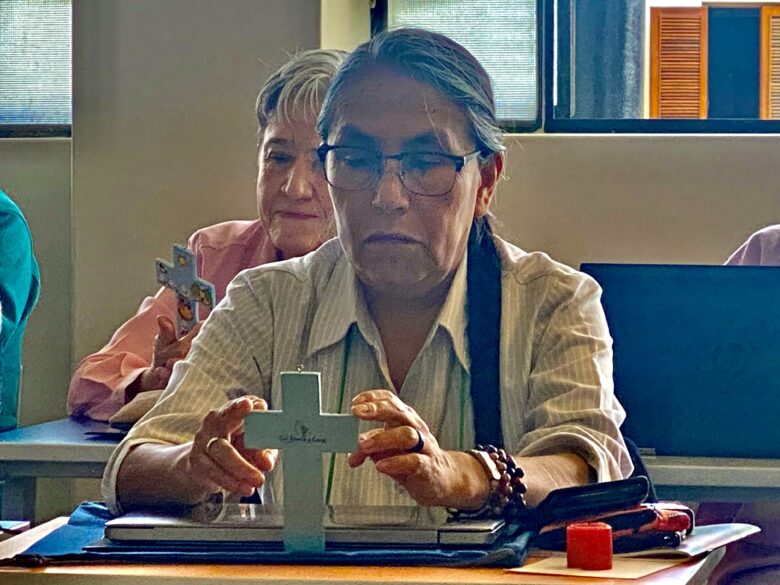
Aun así, la Misa de clausura de la 48.ª reunión de la junta directiva de la CLAR en Lima, Perú, transcurrió con alegría y tranquilidad. Terminaron tarde el 5 de junio, con banderas de toda América Latina y el Caribe dispuestas sobre un altar, recordando a sus amigos caídos y dando gracias por sus vidas. Los miembros de las CLAR de Nicaragua y Haití no asistieron a la reunión. Los nicaragüenses temían salir del país y luego no poder regresar. Los haitianos están lidiando con una violencia creciente. Aquellos que asistieron desde lugares como Cuba y Venezuela compartieron detalles sobre las condiciones deterioradas en sus países, como la falta de alimentos y medicinas.
Los miembros dijeron que este es un camino cada vez más doloroso, ya que América Latina y el Caribe sufren convulsiones políticas, migración a gran escala, violencia, y persecución – situaciones que han afectado cada vez más a la vida consagrada en la región. En medio de todo esto, ellos también hablaron con gran entusiasmo sobre el sínodo de la sinodalidad – un proceso de tres años de escucha y diálogo al que el Papa Francisco ha convocado a la Iglesia, y que se lleva a cabo desde 2021 hasta 2024 y lo que significa para la vida consagrada.
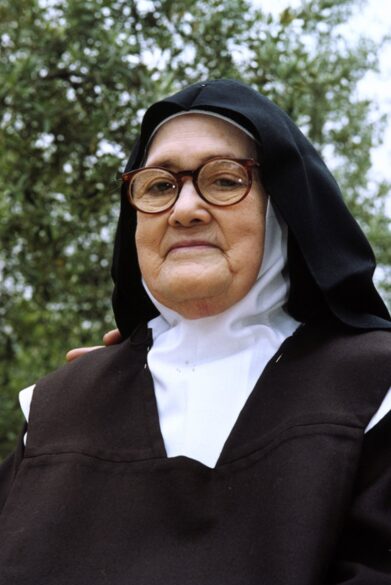
CIUDAD DEL VATICANO (CNS) – Reconociendo que vivieron las virtudes cristianas de manera heroica, el Papa Francisco ha declarado venerables a la madre Mary Elizabeth Lange, fundadora de la primera orden católica de monjas afroamericanas, y a la hermana Lucía dos Santos, quien, con sus primos, dijo haber visto a María cuando era niña en Fátima, Portugal.
El Papa firmó los decretos de reconocimiento de sus virtudes heroicas el 22 de junio. Aún se necesita un milagro atribuido a su intercesión para que puedan ser beatificadas.
Venerable Madre Lange
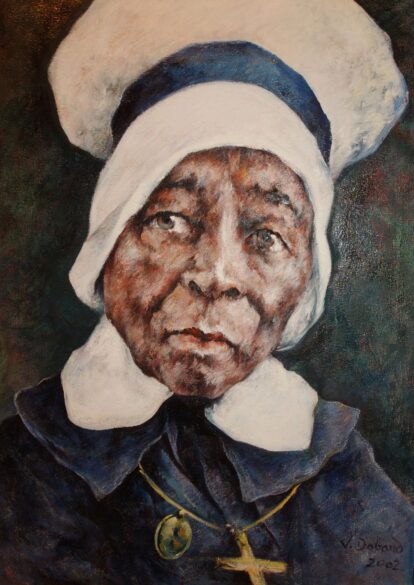
Nacida en Cuba de padres haitianos, llegó a Estados Unidos hacia 1813, estableciéndose cerca de Baltimore, y vio cómo los hijos de otros inmigrantes necesitaban educación.
“Estaba decidida a responder a esa necesidad a pesar de ser una mujer negra en un estado esclavista mucho antes de la Proclamación de la Emancipación”, según el sitio web oficial de su causa de santidad. “Utilizó su propio dinero y su casa para educar a niños de color”. Con el aliento y el apoyo de un sacerdote y del arzobispo James Whitfield de Baltimore, ella y otras tres mujeres hicieron promesas de pobreza, castidad y obediencia en 1829, fundando las Hermanas Oblatas de la Providencia, una orden que continúa en la actualidad.
La Venerable madre Lange murió en 1882.
Venerable Lucía dos Santos
La niña tenía solo 10 años cuando ella y sus dos primos más jóvenes les dijeron a sus amigos y familiares que habían visto a la Santísima Virgen María en Fátima en 1917.
María se apareció por primera vez a Lucía, a Francisco Marto, de 9 años, y a Jacinta Marto de 7 años, el 13 de mayo y las apariciones continuaron una vez al mes hasta octubre de 1917. La Iglesia Católica ha dictaminado que las apariciones y los mensajes de Nuestra Señora de Fátima eran dignos de fe. El 22 de junio, el Papa Francisco declaró “venerable” a Sor Lucía, con un decreto que reconoce las virtudes heroicas de la vidente de Fátima. El Papa Benedicto XVI canonizó a Francisco y Jacinta.
La Venerable Sor Lucía murió el 13 de febrero de 2005 a la edad de 97 años y difundió el mensaje de Fátima a lo largo de su larga vida.
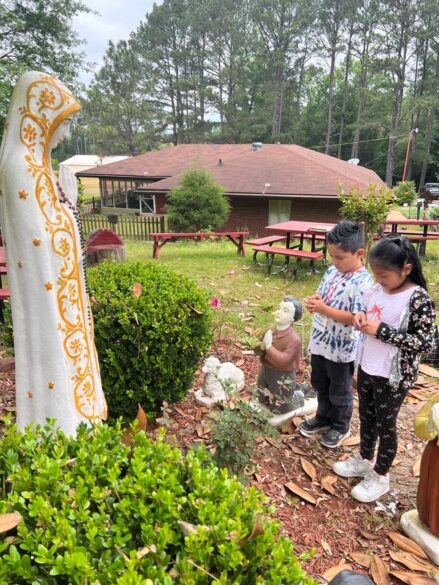
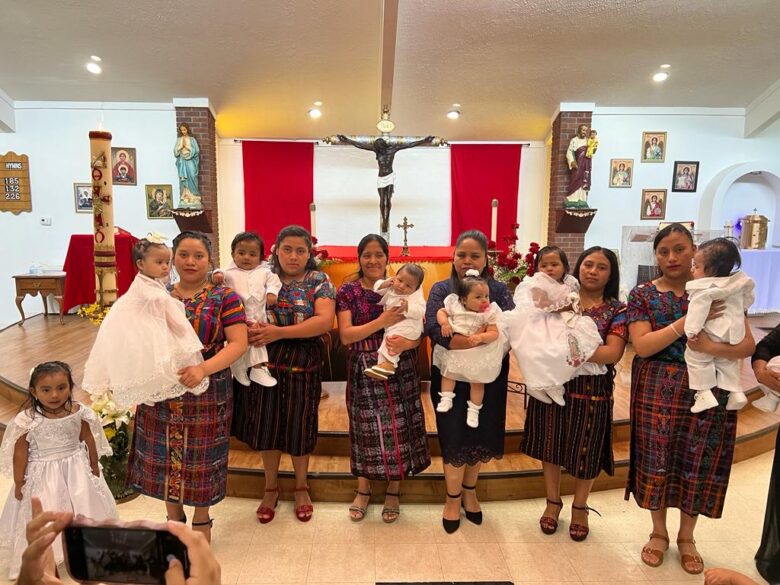
CARTHAGE – (arriba) Madres con sus hijos bautizados posan para la cámara de familiares y amigos, despues de Misa de Bautismo celebrada por el Padre Marco Antonio Sánchez, ST (al centro de la foto) en la iglesia de Santa Ana. (izq.) Niños que atienden a las clases de catequesis de la parroqui de Santa Ana, dedican un momento para rezar frente a la imagen de la patrona del lugar. (Fotos cortesía del Padre Marco Antonio Sánchez, ST)
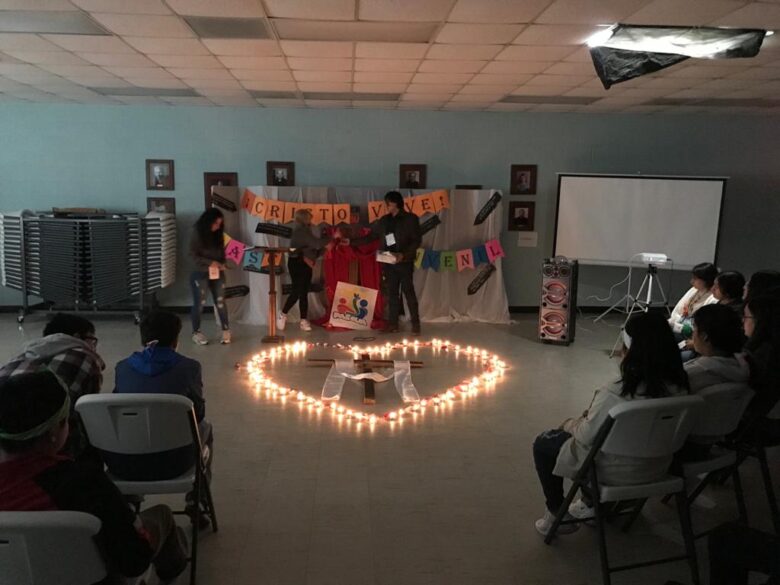
CORINTH – Con el tema “Cristo Vive” se celebró el pasado abril la Pascua Juvenil en la parroquia de St. James the Less. Las fotos están compartidas en nuestra página de Facebook @Diócesis Católica de Jackson. (Foto de Luis Rosales)
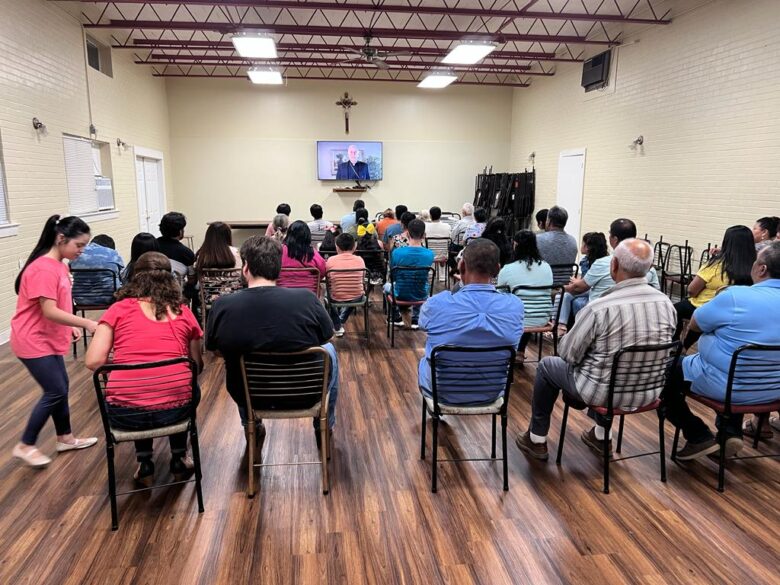
KOSCIUSKO – Primera reunión del proceso de Reimaginación Pastoral en la parroquia Santa Teresa donde los feligreses debatieron diferentes ideas y opiniones después de ver un video introductorio del obispo Joseph Kopacz. (Foto cortesía del Padre Marco Antonio Sánchez, ST)
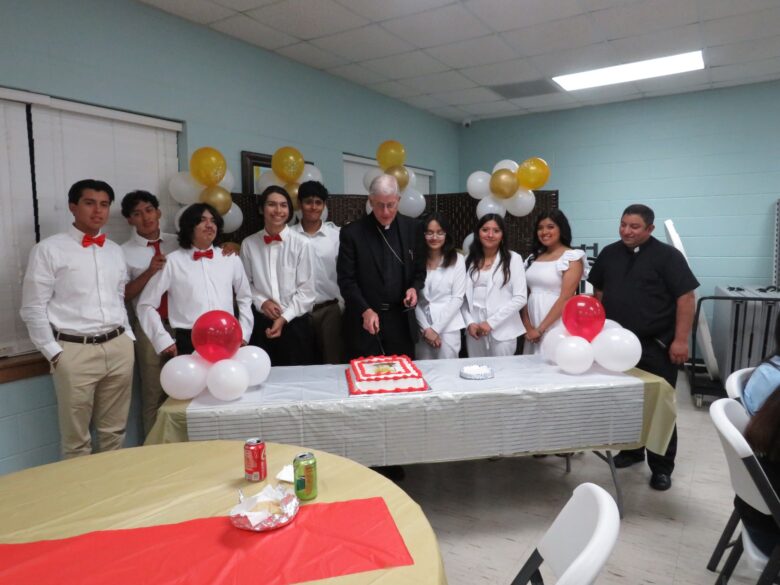
CORINTH – Los Confirmantes se reunen con el obispo Joseph Kopacz para compartir un pastel , despues de la Misa de Confirmación el 9 de junio. En la foto (i-d) Gael Rodriguez, Robert Valdez, Baker Hall, Giovanny Ayala, Brando Loredo, Alexis Solis, Father Mario Solórzano, Bishop Joseph Kopacz, Amado Robles, Anthony León (Booneville), Liliana del Ángel, Sandy Rosales, Ingrid Jaime y Faviola Leon (Booneville). (Foto de Luis Rosales)
Vírgenes y Santos
La Transfiguración del Señor. Agosto 6
Asunción de la Virgen María. Agosto 15
Santa Rosa de Lima, Virgen. Agosto 30
Envíenos sus fotos a
editor@jacksondiocese.org
Síganos en Facebook
@Diócesis Católica de Jackson
Visite Nuestra página web
www.mississippicatholic.com Español
Por Katie Yoder, OSV News
WASHINGTON (OSV News) — La propuesta “Care for Her Act” (“Ley de cuidado para ella”) promete proporcionar lo que sugiere su título: apoyo a las mujeres, específicamente a las mujeres embarazadas y con hijos. Los líderes nacionales pro-vida también enfatizan la importancia del proyecto de ley, que legisladores de la Cámara de Representantes aún no ha abordado este término, y de leyes similares, ya que la tasa de mortalidad materna continúa aumentando en los EE.UU.
El proyecto de ley presentado en la Cámara de Representantes de Estados Unidos en 2021 no menciona la palabra “aborto”, pero algunos líderes provida y del Congreso afirman que empoderaría a las mujeres embarazadas para elegir la vida.
Más recientemente, al conmemorar el primer aniversario del fallo de la Corte Suprema de los EE.UU. en Dobbs vs. Jackson Women’s Health Organization, la representante Elise Stefanik, republicana de Nueva York, presidenta de la Conferencia Republicana de la Cámara y católica, expresó su apoyo a la Care for Her Act.
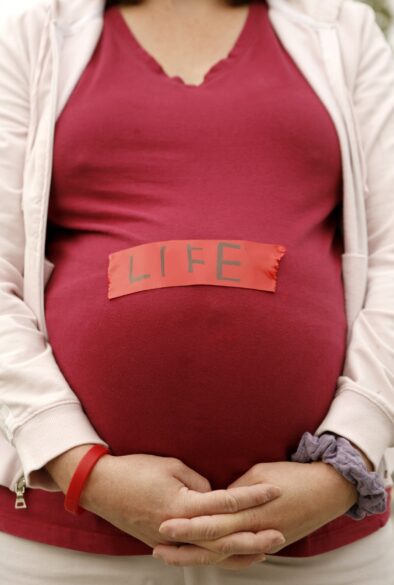
“Realmente creo que la Corte Suprema nos confió a todos la responsabilidad de tomar un tema importante y profundamente personal y generar consenso para brindar a cada niño, madre, familia y especialmente a los no nacidos, esta oportunidad verdaderamente preciosa y sagrada de vida, libertad, y la búsqueda de la felicidad”, dijo en declaraciones el 20 de junio en el National Press Club.
El proyecto de ley “abordaría algunos de los principales problemas que enfrentan las mujeres embarazadas y con hijos”, dijo a OSV News Serrin M. Foster, presidenta de Feministas por la Vida.
“El movimiento pro-vida debe apoyar absolutamente una legislación de este tipo, ya que reconoce la realidad de un niño no nacido y cómo mujeres embarazadas y familias deben estar conectadas con recursos que afirman la vida”, Kristan Hawkins, presidenta de Students for Life of America y Students for Life Action, dijo a OSV News.
La Care for Her Act atrajo la atención nacional por su enfoque integral para apoyar a las mujeres embarazadas y sus hijos por nacer luego de su presentación por parte del representante Jeff Fortenberry, republicano de Nebraska — un legislador católico que luego renunció al Congreso en 2022 después de ser condenado por tres delitos relacionados con contribuciones ilegales a campañas.
El proyecto de ley de 2021 incluyó a Stefanik como uno de los 13 copatrocinadores.
El proyecto de ley promete facilitar el apoyo y los servicios a las mujeres con embarazos inesperados y, de manera más general, satisfacer las necesidades de las mujeres durante el embarazo, el parto y la crianza de los hijos. Intenta abordar no solo las necesidades físicas y financieras de las mujeres, sino también sus necesidades emocionales y sociales.
En ese momento, un conjunto diverso de grupos pro-vida nacionales reconocieron el proyecto de ley, incluidos Feminists for Life, Live Action, Rehumanize International y el Instituto Charlotte Lozier de Susan B. Anthony Pro-Life America, así como instituciones católicas como la Diócesis de Paterson, Nueva Jersey.
Muchos líderes se enfocan en cuatro características particulares del proyecto de ley: una colaboración federal-estatal para evaluar y compilar el apoyo disponible para mujeres embarazadas; una expansión del crédito tributario por hijos para incluir a los niños por nacer; subvenciones federales para las necesidades prácticas de las mujeres, incluida la vivienda materna, la capacitación laboral y otras oportunidades educativas; e incentivos para mejorar la salud materna e infantil al mismo tiempo que se reduce la mortalidad.
Hawkins, quien dirige la organización de adultos jóvenes pro-vida más grande del país con más de 1.400 grupos en los campus escolares, destacó las características de la Care for Her Act, como la expansión del crédito fiscal por hijos.
“Como madre de cuatro hijos, sé que los gastos que conlleva tener un hijo no comienzan cuando nacen”, dijo. “Permitir que los futuros padres usen el Crédito Tributario por Hijos antes del nacimiento respeta este hecho y ayuda a crear atmósferas financieramente estables”.
Hawkins también comentó sobre la naturaleza integral del proyecto de ley.
“Promover recursos para el embarazo y la crianza de los hijos para brindar apoyo tanto antes como después del nacimiento… también aumenta la salud y la felicidad de las familias”, agregó, señalando la propia iniciativa de Students for Life para proporcionar recursos llamada Standing With You.
Feminists for Life también alberga un sitio que ofrece apoyo a mujeres embarazadas y madres, llamado WomenDeserveBetter.com. Autodenominada como una organización de base, este grupo se dedica a eliminar las causas que llevan a las mujeres al aborto a través de soluciones holísticas centradas en la mujer, FFL continúa respaldando el proyecto de ley.
“Feministas por la Vida insta a los legisladores federales y estatales a concentrarse en eliminar sistemáticamente las razones coercitivas que llevan a las mujeres a abortar, principalmente la falta de apoyo para las mujeres embarazadas y los padres”, dijo Foster.
“Los pobres y las mujeres de color se ven afectados de manera desproporcionada”, dijo. “Las mujeres que luchan por obtener un título universitario se sienten obligadas a elegir entre la educación que las ayudaría a salir de la pobreza o sacrificar a sus hijos. La falta de apoyo de los padres de los hijos que concibieron juntos continúa la feminización de la pobreza”.
Otros grupos pro-vida, como la organización nacional March for Life, todavía están en proceso de examinar el proyecto de ley.
Si bien el Comité de Actividades Pro-Vida de la Conferencia de Obispos Católicos de EE.UU. no ha tomado una posición pública al respecto, algunas de las propuestas del proyecto de ley se alinean con las prioridades establecidas. En una carta de 2022 al Congreso, los obispos describieron políticas que promueven a las mujeres, los niños y las familias, incluida la disponibilidad del crédito fiscal por hijos el año anterior al nacimiento y el tratamiento de la mortalidad y morbilidad materna.
Según un informe de los Centros para el Control y la Prevención de Enfermedades publicado en marzo, 1.205 mujeres murieron por causas maternas en 2021, un fuerte aumento en un incremento constante en comparación con 861 muertes maternas en 2020, 754 en 2019 y 658 en 2018.
CDC se basa en la definición de muerte materna de la Organización Mundial de la Salud como “la muerte de una mujer mientras está embarazada o dentro de los 42 días posteriores a la terminación del embarazo… por cualquier causa relacionada o agravada por el embarazo o su manejo, pero no por causas accidentales o incidentales”.
A partir de datos del Sistema Nacional de Estadísticas Vitales, CDC informó que la tasa de mortalidad materna aumentó a 32,9 muertes por cada 100,000 nacimientos vivos en 2021. La tasa de mujeres negras es más alta que la de las mujeres blancas o hispanas, con 69,9 muertes por cada 100,000 nacimientos vivos en 2021. (La tasa para mujeres blancas es de 26,6 por cada 100.000 y para las mujeres hispanas es de 28,0 por cada 100.000.)
Un estudio publicado en 2020 por Commonwealth Fund que comparó la mortalidad materna en los EE.UU. con otros 10 países de altos ingresos encontró que EE.UU. tiene la tasa de mortalidad materna más alta entre los países desarrollados.
(Katie Yoder escribe para OSV News desde el área de Washington, D.C.)